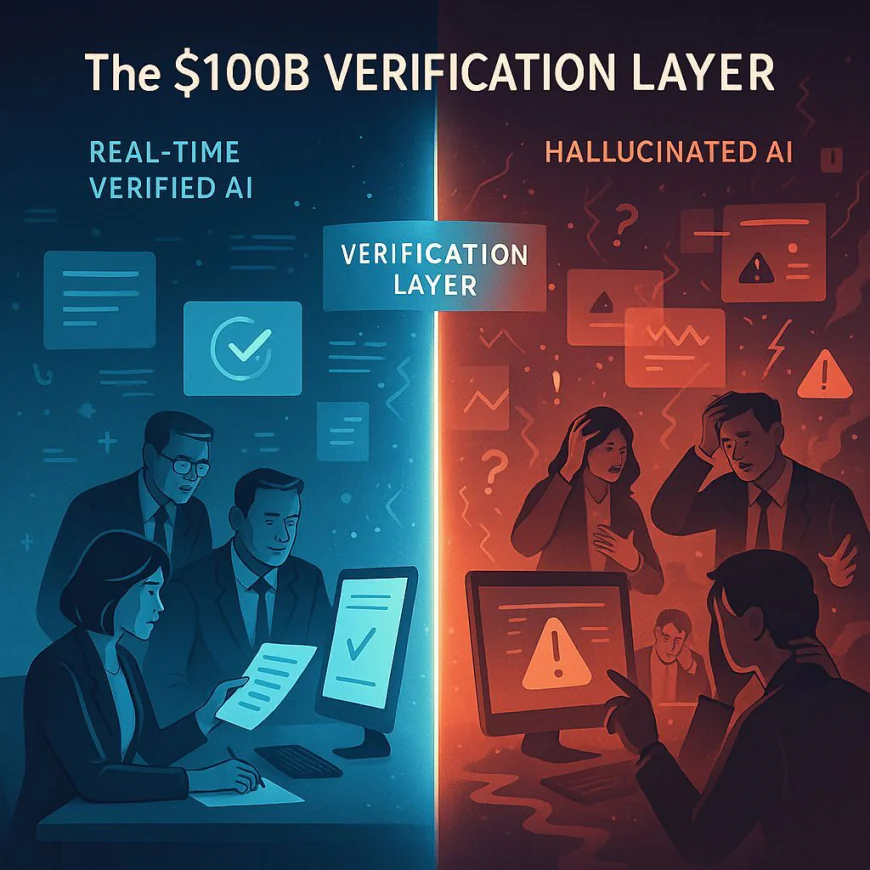AI Experts Say Verification, Not Generation, Is the Future of Artificial Intelligence
As AI systems grow in power, experts argue the next big leap isn't in generation but in real-time fact-checking, source attribution, and confidence scoring. Verification is becoming the new gold standard.

AI experts say the next frontier in artificial intelligence is not generating faster or more creative content, but ensuring that what is generated is verifiable, transparent, and trustworthy.
The insight emerged from a closed-door meeting this week, held in a quiet conference room labeled with three bold letters — SEC. Industry insiders and technology leaders discussed what they believe is a critical shift in AI development: a move away from simply generating content toward real-time verification and trust architecture.
“Generation is no longer the competitive edge,” said a senior AI executive who attended the session. “Verification is.”
Real-Time Fact-Checking Gains Momentum
The discussion highlighted real-world examples, including one at Goldman Sachs, where an internal AI assistant attempted to cite a non-existent FDA approval in a draft. A verification layer flagged the hallucinated claim mid-sentence, preventing it from reaching clients or stakeholders.
This shift — from reactive corrections to real-time fact-checking — is reshaping how leading companies are building and deploying enterprise AI.
The Three Pillars of Verified AI
Experts outlined three principles now viewed as essential to trustworthy artificial intelligence:
-
Real-Time Fact-Checking
AI systems are being embedded with validation engines that cross-reference statements as they’re generated, minimizing the risk of misinformation. -
Source Attribution
Verified AI must “show its work.” If it cannot cite a verifiable source, it should not make the claim. This approach discourages unsupported statements and increases auditability. -
Confidence Scoring
Advanced AI models now include confidence thresholds. Claims below a defined confidence level are flagged or held for human review, enabling more cautious and accurate communication.
Building Trust in the Shadows
Unlike high-profile model releases and prompt engineering tutorials, the move toward verification-first AI is happening quietly. Organizations investing in invisible trust layers are outpacing competitors still battling post-output hallucinations.
“While some debug hallucinations after the fact, others are preventing them in real time,” said Dr. Lena Wu, an AI governance researcher at the University of California.
These behind-the-scenes developments are being adopted by firms that understand the critical difference between AI generation and AI validation.
The Market Implication
With misinformation risks rising, and regulatory scrutiny increasing, AI systems that verify before publishing may soon become the industry standard.
“The $100 billion question isn’t how to build bigger models,” one executive concluded. “It’s who verifies the verifiers.”
As this shift unfolds, the future of AI may depend less on what it can say — and more on how well it can prove it.
Editor’s Note: This article may be updated pending official disclosures from agencies and companies mentioned.


